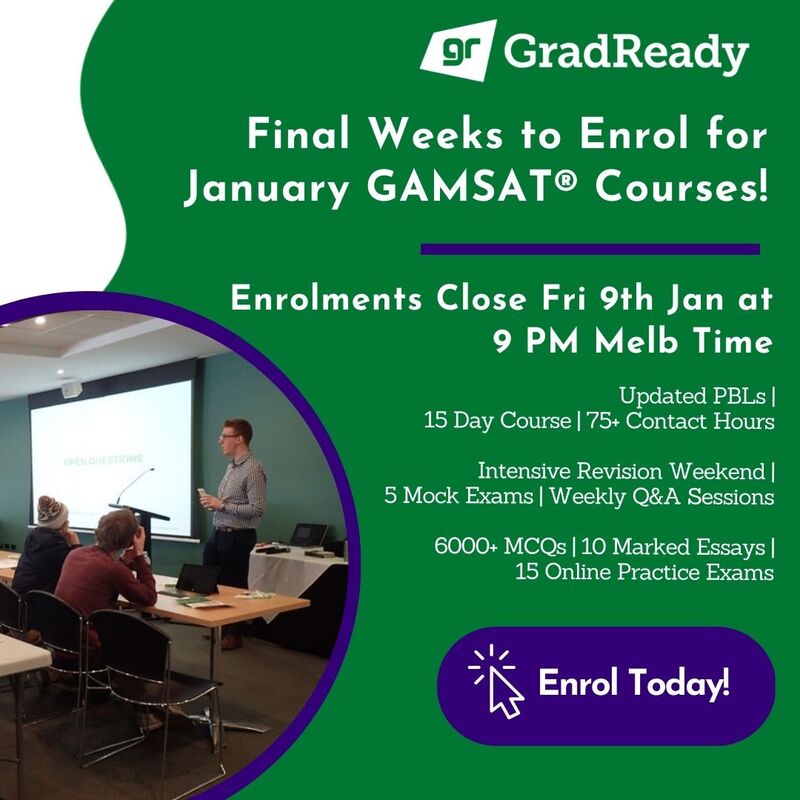Everyone knows that medicine is one of the most competitive university degrees to get into, but not everyone knows the pathway—or rather,
pathways—for
medical school admissions. Yes, there are multiple pathways to study medicine!
In some countries (e.g. many European countries), all medical degrees are undergraduate—that is, you get admitted straight out of high school. In some other countries, e.g. the United States, all medical degrees are postgraduate, requiring completion of an undergraduate degree beforehand.
Australia medical school system is somewhat confusing in that we have both types of degrees. To add further confusion to the mix, some universities offer direct entry places to postgraduate medicine, in which students are offered a place in a postgraduate program right after high school, but this place is conditional on the completion of an undergraduate degree at the same institution first.
In this article, we will explore all three pathways: undergraduate, postgraduate, and direct entry to postgraduate medicine. We will also cover different types of places (Commonwealth Supported Places, Bonded Medical Places, and Full-Fee Places) and what they mean.
Please note that, while I will also touch on international students in this article, most of the information here will be directed towards domestic students.
Undergraduate Medicine
Undergraduate medical degrees, such as the MBBS (Bachelor of Medicine, Bachelor of Surgery) are 5-6 years long and are started directly after high school. Examples of universities that offer this pathway are Curtin University, University of Tasmania, and James Cook University. Entry to these universities is usually determined via secondary school ATAR score, UCAT score, and an interview. Some of these courses may have mature age places that do not require an ATAR score; it is best to check with individual universities.
Since undergraduate medicine places are targeted towards high school students, application is via each state’s university application system.
Postgraduate Medicine
Postgraduate medical degrees, such as the MD (Doctor of Medicine) and MChD (Medicinae ac Chirurgiae Doctoranda), are 4 years long and require completion of an undergraduate degree. Examples of universities that offer this pathway are the University of Western Australia, Flinders University, and University of Queensland. Entry to these universities is usually determined via the GPA (Grade Point Average) of your last three years of tertiary study, GAMSAT score, and an interview. Some universities also require a portfolio, in which you can write about relevant extracurricular experiences. Students often consider the GAMSAT exam to be the biggest hurdle to study medicine, but knowing
how to prepare for the GAMSAT will help tremendously. If you’re worried that you won’t be able to study medicine because you have a low GPA, check out our blog article
What are My Options for Studying Medicine If I Have a Low GPA?
Most postgraduate medical degrees can be applied for through
GEMSAS, which is a centralised application system. There are three universities that are not a part of GEMSAS and must be applied for individually; these universities are Flinders University, the University of Sydney, and Monash University. Note that Monash University only accepts domestic applicants who have completed certain degrees at Monash, or international applicants who have completed degrees with significant biomedical sciences content. You'll also need to go through a medical school interview as a part of the med school admission process, so be sure to check out our
Guide to Medicine Multiple Mini-Interviews.
Postgraduate Medicine with Direct Entry
Postgraduate medicine degrees that also offer direct entry can be further divided into two types. One type, which is by far the more common type, is a combined bachelor’s and MD degree. The second type is a stand-alone MD that also accepts outside applicants through the graduate entry (GEMSAS) pathway discussed above.
For the combined bachelor’s/MD, all students who do the bachelor’s degree proceed onto the MD degree, and the MD degree does not take in new students who did not complete the bachelor’s degree. In essence, the two degrees function together as one 5–6-year degree. Examples of universities that offer this program are Bond University and the University of Adelaide.
For the stand-alone MD, a certain number of guaranteed places are offered to high-achieving high school students. These students are still required to complete an undergraduate degree before proceeding onto the postgraduate medical degree. The University of Western Australia is a university that offers this program.
Since both types of programs are targeted towards secondary school applicants, the application and admissions processes are like those of the undergraduate programs discussed above. Entry is largely based on ATAR, UCAT, and interview, and the actual application is submitted via the relevant state’s admissions portal.
Place Types
There are three main types of places that you might be offered: Commonwealth Supported Place (CSP), Bonded Medical Place (BMP), and Full-Fee Place (FFP).
I’ll go through FFPs first. FFPs are not subsidised by the government. Therefore, they are very expensive. For example, a four-year postgraduate degree at the University of Melbourne costs $335,707 with an FFP. If you are an Australian citizen, or Australian permanent resident with a humanitarian visa, you can apply for a FEE-HELP loan from the government. (Not all permanent residents are eligible for FEE-HELP). Note that there is a limit on how much you can borrow via FEE-HELP, which currently stands at $156,847—much less than the full cost of the degree. FFPs are relatively easier to obtain as many people are not willing to pay that much money, so there is less competition. However, if you apply for a FFP, make sure that you have the means to pay for your study.
CSPs and BMPs are both subsidised by the government, so domestic students only pay around $11,000 per year. The main difference between the two is that a BMP requires a “return of service.” What this means is that you will be required to work in an area of need (usually a rural or remote area) for a certain length of time. Currently, people with a BMP must spend at least 3 years fulfilling their “return of service” obligations over an 18-year period. If you do not fulfil your obligations, then you will be required to pay back the amount that the government subsidised towards your course. More information on the BMP program can be found
here. Around 30% of medical places are BMPs.
Just for clarification, BMPs and “rural pathway” places are not the same thing. Most universities also have a separate quota for rural students because students who come from a rural area are also more likely to be willing to work in rural areas. However, rural students are eligible for either BMPs or CSPs (or FFPs if offered by the university), just as metro students are eligible for BMPs or CSPs (or FFPs).
International Students
While the information above was targeted towards domestic students, a lot of it is also somewhat relevant to international students as well. Most universities, regardless of whether they are undergraduate-only, postgraduate-only, or postgraduate with direct entry, have places for international students. International students largely have similar requirements, though they may have to fulfil them in different ways (e.g. some universities allow applicants to sit MCAT instead of GAMSAT). However, you will have to apply to the universities directly, as GEMSAS and the state-specific central application services are only for domestic students. You’ll also be on the hook for international student fees, but I’m sure you saw that one coming from a mile away!
Conclusion
It can be hard to get your head around the pathways to an Australian medical degree. As discussed above, there are three different pathways: undergraduate, postgraduate, and postgraduate with direct entry. While the undergraduate and postgraduate direct entry pathways are quite similar in terms of length and entry requirements, the stand-alone postgraduate MD degrees are a bit different. You may also find the diagram below helpful if you are a more visual person:

Although it can be difficult to figure out the best way for you to study medicine, I hope that this article has helped you somewhat and has given you some direction. We at GradReady wish you all the best with your journey, no matter what path you wish to take. If you need any help along the way, we have a range of
GAMSAT preparation courses to help you overcome these hurdles and pursue the career of your dreams!







